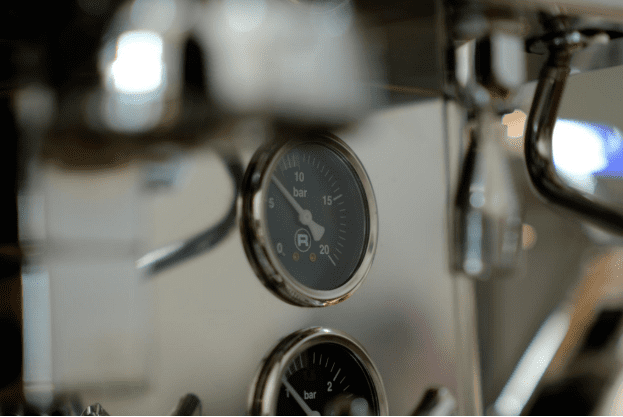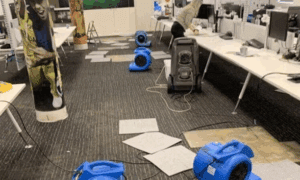A single burst hydraulic line can cost a manufacturing facility $250,000 in downtime and repairs. In healthcare, a malfunctioning ventilator pressure system can endanger lives. According to industry reports, nearly 42% of unplanned industrial downtime stems from equipment failures that proper monitoring could have prevented.
The challenge isn’t just about fixing problems after they occur—it’s about seeing them coming. Modern pressure monitoring technology has evolved from simple mechanical gauges to intelligent systems that predict failures weeks before they happen, and it’s fundamentally reshaping how industries approach safety and operational efficiency.
Why Smart Pressure Monitoring Changes Everything
Traditional pressure monitoring relied on manual checks. Operators walked facilities with clipboards, recording gauge readings at scheduled intervals. Problems occurring between inspections went undetected. Human error affected accuracy. Critical failures could develop rapidly between checks.
Pressure sensors designed for industrial and commercial environments have transformed this approach entirely. These devices provide continuous monitoring, instant alerts when parameters drift outside safe ranges, and historical data that reveals developing problems long before they become emergencies.
The shift isn’t just technological—it’s cultural. Teams working with comprehensive monitoring systems develop deeper understanding of their processes. They spot subtle correlations between operating parameters and quality outcomes. They identify optimization opportunities that would remain hidden without constant visibility.
The Technology Powering Modern Systems
Today’s pressure sensors convert physical force into electrical signals through several proven technologies. Strain gauge sensors detect microscopic material deformations under pressure, offering excellent accuracy across wide temperature ranges—ideal for harsh industrial environments.
Piezoresistive sensors use semiconductor materials that change electrical properties under stress. They provide fast response times and compact designs, perfect for automotive fuel injection systems or medical equipment where space is limited and speed matters.
Capacitive sensors measure changes between charged plates as pressure deforms surfaces. They excel in clean environments requiring high accuracy and stability, like laboratories and semiconductor manufacturing.
Modern industrial sensors achieve precision within 0.1% to 0.25% of their measurement range. This means a 100 PSI sensor can detect changes as small as 0.1 PSI—enabling applications and control strategies that were impossible with mechanical gauges.
Real-World Impact Across Industries
Manufacturing facilities represent the largest market for pressure monitoring. Production lines running continuously depend on hydraulic and pneumatic systems maintaining exact pressure levels. Packaging lines require precise pneumatic pressure for proper sealing. Too little creates contamination risks. Too much wastes energy and damages materials.
In healthcare, ventilators adjust breathing support based on continuous pressure measurements of lung compliance. Infusion pumps use pressure sensors to detect downstream blockages that could prevent proper medication delivery. Dialysis machines monitor blood pressure throughout multi-hour treatments. These applications demand exceptional reliability—sensor failures can have life-or-death consequences.
Modern vehicles contain dozens of pressure sensors. Anti-lock braking systems measure hydraulic force at each wheel hundreds of times per second to prevent lockup during emergency stops. Tire pressure monitoring systems have reduced blowout-related accidents by alerting drivers to dangerous under-inflation. Engine management systems use intake manifold pressure to optimize fuel delivery and reduce emissions.
The Predictive Maintenance Revolution
The biggest change isn’t better sensors—it’s smarter data analysis. Traditional maintenance followed fixed schedules or reacted to failures. Predictive maintenance uses continuous sensor data to schedule repairs based on actual equipment condition.
When teams track pressure trends over weeks and months, patterns emerge. Gradual pressure increases might indicate contamination buildup. Increasing variability could signal deteriorating seal performance. These subtle changes appear long before complete failures, allowing planned repairs during scheduled downtime rather than emergency shutdowns.
Machine learning algorithms excel at identifying these patterns. After training on historical data, they learn what normal operation looks like and detect anomalies indicating developing problems. Some facilities now use AI systems that recommend specific corrective actions based on patterns identified across their entire network of installations.
Implementation Strategies That Work
Successful pressure monitoring deployments require careful planning. Sensor selection must match application requirements—operating pressure range, accuracy specifications, response time, temperature tolerance, and media compatibility all matter.
Installation quality directly affects reliability. Sensors need secure mounting to avoid vibration errors. Pressure ports should measure representative system pressure rather than turbulent flows. Electrical connections require protection from moisture, dust, and electromagnetic interference.
Training is critical. The best technology delivers limited value if teams don’t use it effectively. Successful implementations invest in education that helps personnel understand what sensor data means and when to act. Involving experienced technicians in planning discussions and celebrating early wins where monitoring prevents problems builds buy-in and demonstrates value.
Economic Justification and ROI
The financial case centers on three main benefits. First, preventing unplanned downtime—a single major failure often costs enough to justify the entire system investment. Second, energy optimization—facilities can safely reduce pressure levels with reliable monitoring, cutting energy consumption by 10-20% while maintaining performance. Third, equipment life extension—operating within design parameters rather than allowing pressure excursions that accelerate wear makes equipment last years longer.
Production losses, expedited parts shipping, overtime labor, and missed delivery penalties make unexpected failures extraordinarily expensive. Energy savings from optimized operation and extended equipment life create compounding returns that often pay back monitoring investments within 18-24 months.
Future Developments Worth Watching
Wireless sensor networks are eliminating installation barriers. Battery-powered sensors with radio transmitters work in locations where running wires would be impractical. Energy harvesting technologies capturing power from temperature differences, vibration, or electromagnetic fields enable wireless sensors that operate indefinitely without battery replacement.
Edge computing built into next-generation sensors reduces data processing burdens. Instead of transmitting raw measurement streams, smart sensors perform local analysis and send only summary information or alerts. This reduces network bandwidth requirements while enabling faster local responses.
Cloud-based analytics platforms allow facilities to benchmark performance against industry standards and similar operations worldwide. This comparative analysis identifies improvement opportunities and validates that monitoring systems are configured optimally.
Making the Move to Smart Monitoring
Organizations should start with pilot programs demonstrating value before facility-wide rollouts. Identify critical systems where failures have the biggest impact or energy consumption is highest. Installing monitoring on priority systems generates quick wins that build support for broader implementation.
Work with manufacturers and integrators who understand your industry’s specific requirements. Look for strong technical support and training programs. Plan for scalability from the beginning—monitoring architecture should support expansion without requiring complete redesign.
The transition to comprehensive pressure monitoring represents more than a technology upgrade. It’s a fundamental shift in how facilities understand and manage critical systems. Companies making this transition find that better visibility enables smarter decisions, safer workplaces, and more efficient operations that strengthen their competitive position in increasingly challenging markets. The question isn’t whether to implement advanced monitoring—it’s how quickly you can deploy it before competitors gain the advantage.



































